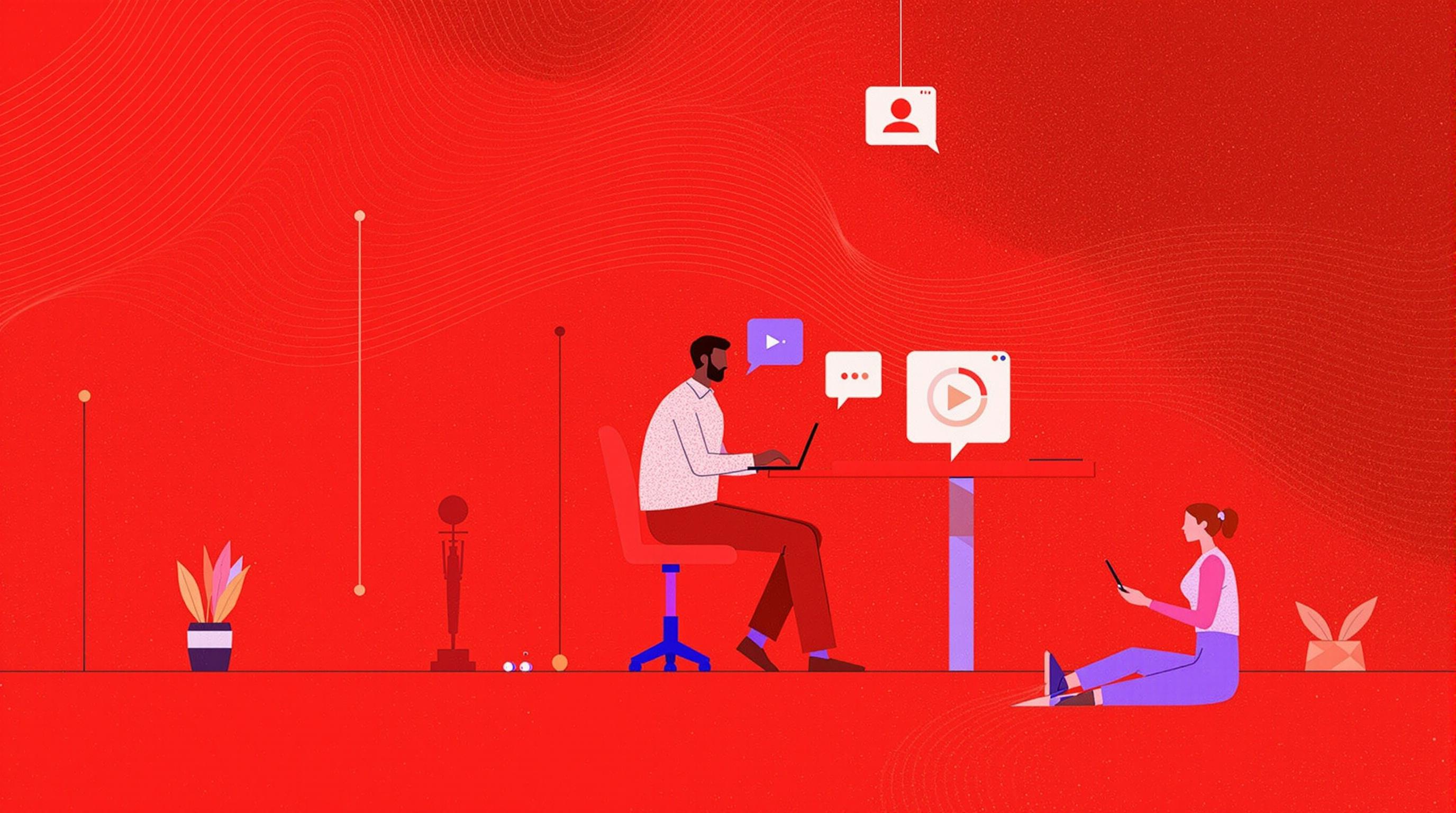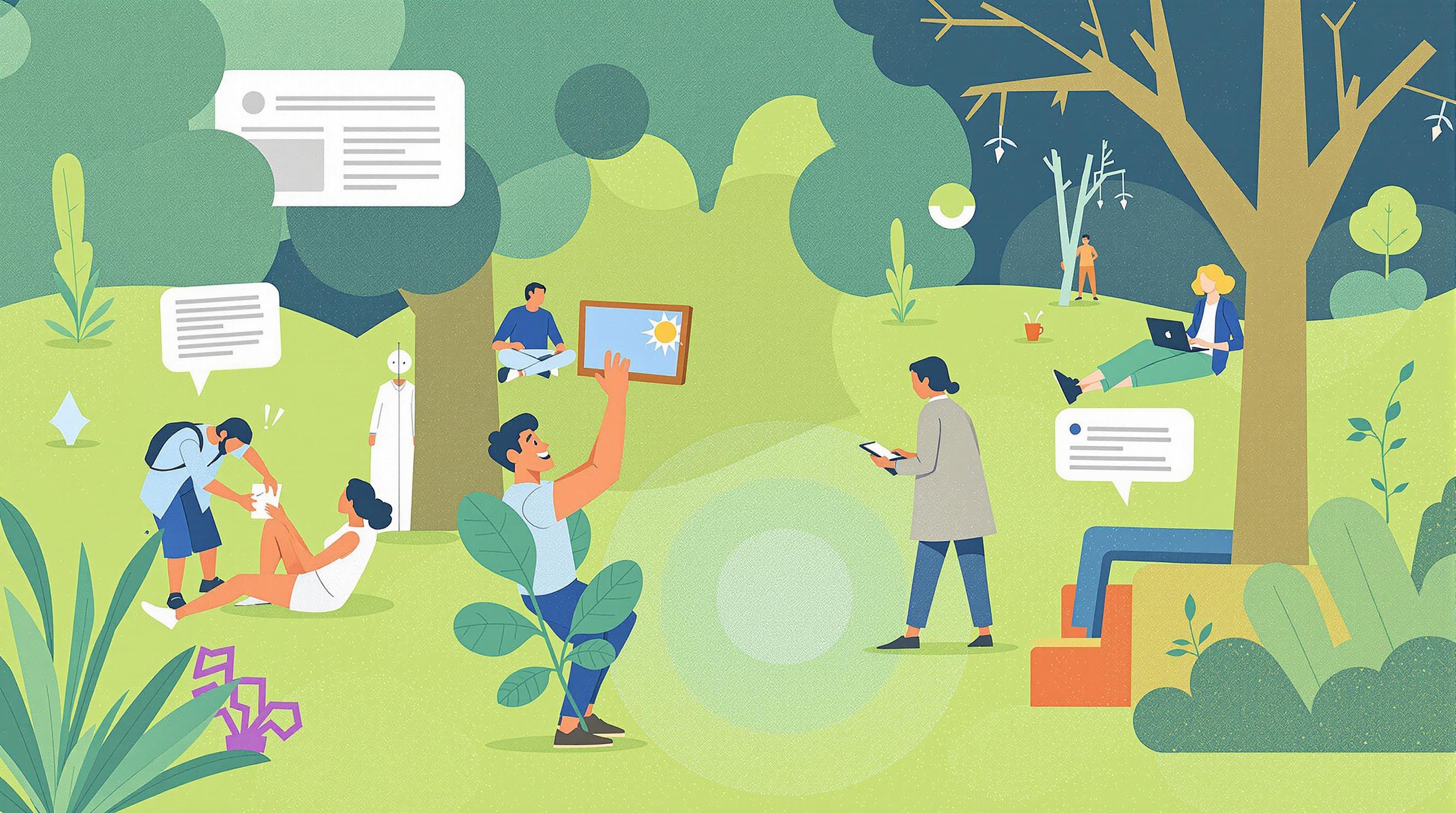Related Articles
- Navigating the Talent Labyrinth: How Emotional Intelligence Is Shaping New Hiring Practices in Unseen Markets
- Behind the Scenes: How Automating HR Processes Is Redefining the Future of Recruitment and Job-Seeking Strategies
- Beneath the Surface: Unveiling the Surprising Role of Environmental Sustainability in Shaping Future Careers
- Exploring the Quirky Side of Remote Work: How Hobbies Are Fueling Professional Success in Unexpected Ways
- How the Remote Revolution is Inspiring Unlikely Friendships Across Continents: A Study of Global Connectedness
- The Unforeseen Bond: How Virtual Coworking Spaces Foster Unexpected Connections Amidst Remote Work
How Remote Work is Unraveling the Fabric of Workplace Relationships and Reshaping Communication Norms
How Remote Work is Unraveling the Fabric of Workplace Relationships and Reshaping Communication Norms
Remote work is revolutionizing how we communicate and build relationships in the workplace, unveiling both challenges and opportunities. As we navigate this new normal, understanding the shifts in our interactions can help us foster meaningful connections, even when physically apart.
The Changing Landscape of Workplace Relationships
Gone are the days of spontaneous water cooler chats and quick catch-ups during coffee breaks. According to a study by Buffer, 20% of remote workers struggle with loneliness [source]. The absence of in-person interactions is fundamentally altering workplace relationships. Just imagine—a team that once thrived on face-to-face conversations now relies on Slack messages and Zoom meetings. While technology enables connectivity, it can also create barriers to genuine interactions.
The Social Fabric: Woven or Torn?
For many, the transition from office to home has been disorienting. Case studies from various companies show that employees are increasingly feeling disconnected from their coworkers. Take the example of a tech startup in San Francisco that reported a 30% drop in employee engagement after shifting exclusively to remote work. This not only affects morale but can also lead to decreased productivity and creativity.
Statistical Insights
Research by Harvard Business Review highlighted that 61% of employees miss the casual conversations that naturally occur in an office environment [source]. The study indicates that these trivial exchanges are vital to relationship-building, fostering camaraderie, and driving innovation. Without them, remote workers can feel isolated, which stifles collaboration and creativity.
Navigating New Communication Norms
This brings us to the critical question: how do we reshape communication norms in a remote work environment? For starters, many companies are adopting more structured communication practices. Weekly team check-ins, daily stand-ups, and regular one-on-ones have become essential tools for maintaining connection and accountability. This structure serves as a double-edged sword; while it enhances focus, it can also lead to a sense of being constantly “on the clock,” which can be exhausting.
A Language All Its Own
Moreover, the digital communication platforms we utilize—whether Zoom, Teams, or Google Meet—require a different set of social cues. A humorous meme might lighten the mood in a chat, but it may also lead to misunderstanding if not appropriately contextualized. As a result, adapting to this new communication etiquette becomes crucial. While emotes and GIFs have found their place in our communion, they can’t entirely replace the nuance of face-to-face discourse.
The challenge, then, is to find balance. Ideally, remote teams should blend new communication tools with traditional practices. For instance, a fun virtual game night can spark friendships that otherwise would have grown during those late-night office brainstorming sessions.
An Anecdote: The Power of Virtual Team Building
Recently, I participated in an online escape room with my remote colleagues. At first, it felt awkward, navigating shared screens while trying to collaborate. However, by the end of the hour, we had shared laughs, solved puzzles, and built a sense of teamwork that a traditional meeting rarely fosters. This illustrates that, despite the hurdles, remote work can cultivate relationships in novel ways.
Does Remote Work Favor Introverts?
Counterintuitive as it may seem, some research suggests that remote setups might favor introverted individuals, who typically brim with creativity but may feel stifled in loud office environments. A study conducted at Stanford University indicated that introverts reported higher job satisfaction when working remotely [source]. However, while introverts thrive, extroverts may struggle with the reduced opportunity for social interaction.
Potential Pitfalls of Remote Work
Yet, complacency in remote collaboration can create pitfalls. Continuous remote work may breed a false sense of security, leading employees to believe that communication is smooth and problem-free. In reality, misunderstandings can escalate without the immediacy of face-to-face conversations. If left unchecked, these gaps in communication can fester into larger conflicts.
Building Bridges, Not Walls
To address these challenges, intentional efforts are needed. Leaders must foster an environment that encourages open communication. Embrace vulnerability and encourage employees to share their challenges—after all, it’s essential to recognize that behind every screen is a human being navigating similar uncertainties.
Organizational Culture: The Necessary Shift
Shifting workplace culture to prioritize mental well-being is not just benevolent—it’s essential for productivity. Organizations are increasingly prioritizing employee experience, focusing on building a culture that embraces flexibility and autonomy. Companies like Buffer and Zapier are leading the charge, offering unrestricted vacation policies and mental health resources to support their teams.
Trust is Key
As remote teams grow, fostering trust becomes pivotal. According to a recent Gallup survey, 78% of employees who feel trusted by their managers are more likely to engage and perform better [source]. Trust not only bridges gaps in communication but builds resilience in workplace relationships. Developing this trust means being transparent and showing empathy during times of change.
The Role of Leadership
Leaders are best suited to model these behaviors; after all, their actions set the tone for team dynamics. Engaging in active listening and sincerely responding to feedback can lead to significant shifts in workplace morale. When leaders demonstrate vulnerability and humanity, employees are empowered to do the same.
A Glimpse into the Future: Hybrid Models
Looking ahead, many businesses are shifting toward hybrid work models—a blend of remote and in-office work. This approach attempts to balance flexibility with the need for social interaction. A powerful advantage of hybrid work is that it allows teams to come together in person for brainstorm sessions or team-building retreats while maintaining the comfort of working from home for individual tasks.
Statistics show that 72% of employees would prefer a hybrid work model going forward [source]. This trend suggests that organizations will need to continue adapting their communication practices, placing even greater emphasis on inclusivity and understanding to ensure effectiveness.
Creativity Within Constraints
Interestingly, constraints often drive creativity. With geographic barriers removed, diverse talent pools have emerged. Organizations now have the opportunity to draw from a wider array of perspectives and experiences. Embracing this diversity can result in richer ideas and more innovative solutions.
A Word for the Digital Natives
As a 25-year-old writer, I’ve had my share of remote work frustrations and victories. For my generation, digital communication is second nature, but we still crave the authenticity of real-world interactions. As we negotiate a cohesive digital culture, it is essential to remember that human connection remains at the heart of collaboration.
In Conclusion: The Evolution of Workplace Relationships
Remote work is indeed reshaping how we communicate and forge relationships within the workplace. The challenges it presents also offer pathways to innovate and redefine our work experiences. By embracing change, prioritizing connection, and finding a balance between remote and in-person interactions, we can transform our workplace into a more cohesive and supportive environment. Remember—the fabric of workplace relationships is not unraveling; it is evolving. Let’s weave a new tapestry together that reflects our diverse experiences and aspirations.





